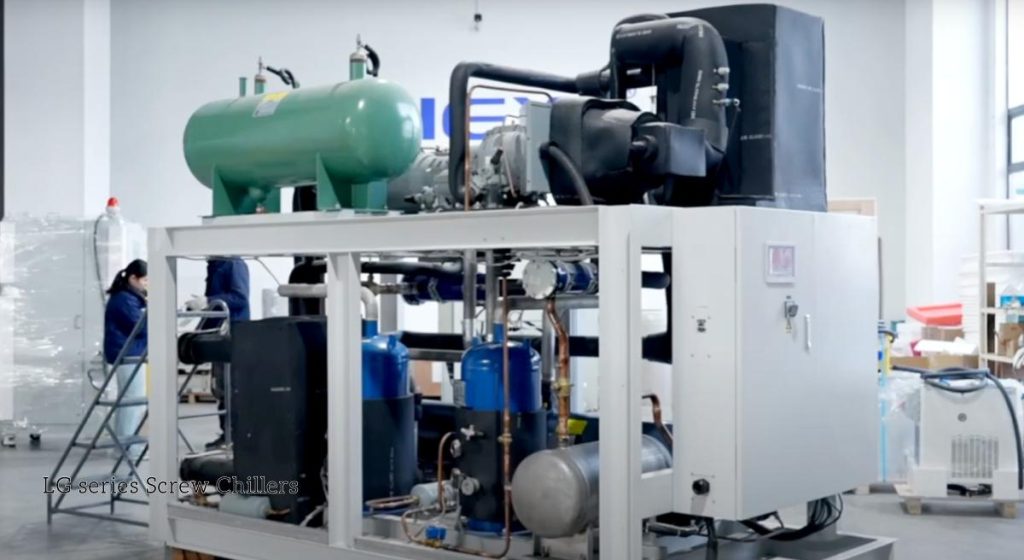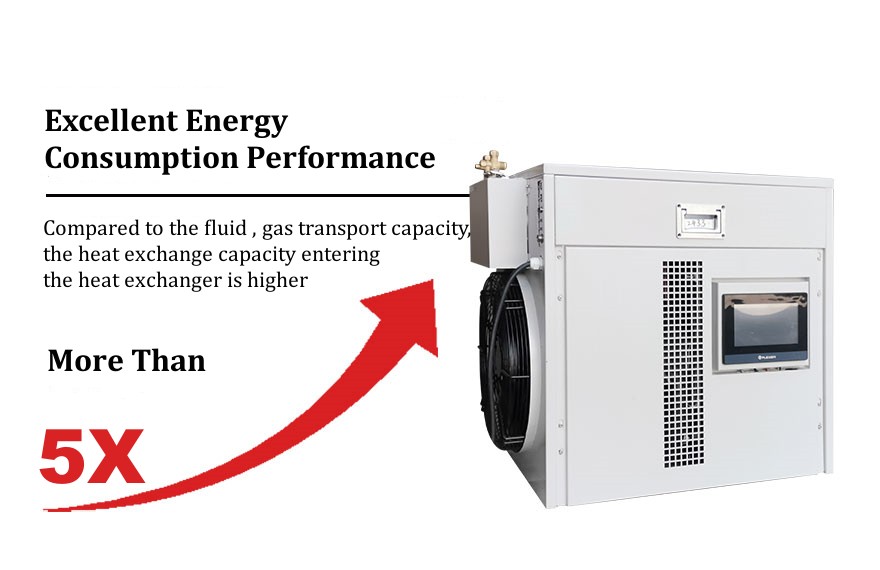What is a Gas Chiller

- 4 tipi di sistemi di refrigerazione: quale si adatta alla tua struttura?
- Cos’è un chiller VFD: chiller VFD vs chiller non VFD
- What is a Gas Chiller
- What is a Scroll Chiller
- What is a Screw Chiller
- Chiller Refrigerant Charging Tools Steps and Tips
- Chiller Low Pressure Alarm 5 Common Reasons and Solutions
- Is r22 refrigerant still available for chillers
- Agosto 2025
- Luglio 2025
- Giugno 2025
- Maggio 2025
- Marzo 2025
- Febbraio 2025
- Gennaio 2025
- Dicembre 2024
- Novembre 2024
- Ottobre 2024
- Settembre 2024
- Agosto 2024
- Luglio 2024
- Giugno 2024
- Maggio 2024
- Aprile 2024
- Marzo 2024
- Febbraio 2024
- Settembre 2023
- Luglio 2023
- Giugno 2023
- Maggio 2023
- Gennaio 2023
refrigeratore raffreddato ad aria refrigeratore Installazione di un refrigeratore refrigeratori Chiller Troubleshooting Congelatore a freddo refrigeratore di raffreddamento circolatore di raffreddamento e riscaldamento sistema di raffreddamento e riscaldamento cooling system Reattore in vetro a doppio strato sistema di controllo dinamico della temperatura congelatore refrigeratore a gas circolatore di riscaldamento refrigeratore industriale raffreddamento industriale congelatore industriale frigorifero industriale reattore a camicia refrigeratore a bassa temperatura notizie refrigeratore farmaceutico refrigeratore di processo reattore refrigeratore raffreddamento del reattore raffreddamento del reattore riscaldamento riscaldamento del reattore raffreddamento sistema di reattori circolatore refrigerato refrigeratore a refrigerazione refrigeratore a vite refrigeratore per semiconduttori refrigeratore di prova per semiconduttori sundi tcu controllo della temperatura camera di prova termostato refrigeratore a bassissima temperatura refrigeratore di prova per veicoli refrigeratore d'acqua refrigeratore raffreddato ad acqua wtd
If your factory is located in an area with high electricity costs or a stressed power grid, you’re no doubt familiar with the frustrations of high electricity bills and unreliable cooling system performance. The good news is that gas chillers can be powered by natural gas instead of electricity.
What is a gas chiller? How does it work? What are the benefits of using one for your factory? If you have any questions, this article will answer them all.
What is a gas chiller?
It’s called a gas chiller because it’s a cooling system powered by natural gas. It still provides chilled water to equipment or processes, but uses natural gas instead of electricity to operate the mechanical compressor or generate heat to drive the refrigeration cycle.
In many countries and regions, natural gas is cheaper than electricity, so in these locations, whether large commercial centers or industrial plants, gas chillers are often used for cooling, helping to reduce operating costs.


Types of Gas Chillers and How They Work
Common gas chillers include engine-driven and gas absorption types.
Engine-Driven Chillers
The operating principle of an engine-driven gas chiller is similar to that of an electric-driven unit, differing only in that a gas engine is used instead of an electric one. The mechanical compressors used in gas-fired water chillers are typically screw compressors and centrifugal compressors.
The gas engine drives the compressor, compressing the refrigerant gas and discharging it into the condenser. Here, the refrigerant gas is condensed into a liquid. After throttling and reducing its pressure, it enters the evaporatore, where it absorbs heat from the coolant and evaporates back into gas. The gas is then drawn back into the compressor, completing the cycle.
The unique feature of this refrigeration system is that the gas engine generates heat during operation. This waste heat is recovered through a heat exchanger and can be used for space heating or to provide stable heat for processes requiring heating.
Gas-fired absorption chillers
Gas-fired absorption chillers do not use a mechanical compressor. Instead, the heat generated by the combustion of gas drives the circulation of the absorbent and refrigerant. Lithium bromide aqueous solution or an ammonia-water mixture is typically used as the absorbent.
The solution absorbs the evaporated refrigerant vapor, maintaining the system at a low pressure. A heater or generator then heats the absorbed refrigerant solution, separating the refrigerant from the solution and reevaporating it.
This process increases the gas pressure, eliminating the need for further compression in the compressor and allowing it to be condensed directly into the condenser. The subsequent steps until evaporation are virtually identical to those of an engine-driven chiller, except that some units may not utilize a throttling device.
Absorption chillers are generally less efficient than engine-driven natural gas chillers. However, since they lack a compressor, they operate extremely quietly, making them ideal for use in sound-sensitive locations.

Explore high-efficiency and energy-saving chiller solutions!
Advantages of Gas Chillers
Cost Saving
One of the most significant advantages of gas chillers is their ability to reduce operating costs. In regions where natural gas is cheaper and more widely available than electricity (such as Japan, South Korea, and parts of Europe), switching to gas chillers can significantly reduce energy bills.
Because gas chillers are less dependent on electricity, they can also help businesses avoid peak electricity costs. This makes them particularly popular in environments such as data centers, manufacturing plants, and hospitals, where temperature-controlled equipment must operate continuously.
Integrating gas chillers into combined cooling, heating, and power (CCHP) systems can also help businesses achieve further savings. When connected to a waste heat recovery system, they can simultaneously produce chilled water and provide heating and domestic hot water, maximizing energy efficiency.
Efficienza energetica
Gas chillers can utilize natural gas or even waste heat from other industrial processes. For example, absorption gas chillers can convert low-grade heat into useful cooling, making them ideal for facilities that can utilize excess steam or flue gas. This not only improves overall system efficiency but also better utilizes otherwise unused energy.
Another advantage is their low electricity demand, which doesn’t place additional strain on local power infrastructure. This provides a reliable solution in areas where electricity supply is limited, unstable, or expensive.
Environmental Benefits
From an environmental perspective, gas-fired chillers help reduce dependence on electricity. In many countries, electricity still primarily comes from coal or other high-emission sources. By shifting some cooling demand to natural gas, companies can reduce indirect carbon emissions, especially in markets with carbon-intensive grids.
Furthermore, gas chillers’ ability to recover and reuse waste heat further enhances their environmental value. Trigeneration (cooling, heating, and hot water) means fewer individual machines, less fuel burned, and lower overall emissions.
In regions where renewable gas (biogas or hydrogen blends) is entering the energy mix, gas chillers also offer a path to cleaner future operations, aligning with long-term decarbonization strategies.
Conclusione
Looking for a reliable industrial cooling system? LNEYA offers a wide range of chiller types and performance levels. If a standard model doesn’t meet your requirements, we also offer one-stop customization services. With the help of our chiller experts, we can work together to design a cooling system that’s tailored to your unique application.
FAQ
Chiller correlati
CONTATTO
TEL:TELEMATICO
EMAIL: EMAIL: EMAIL: EMAIL: EMAIL: EMAIL: EMAIL
WeChat e WhatsApp: il nostro servizio

Wechat QR

Hai domande o hai bisogno di un preventivo? Compila il modulo sottostante e il nostro team ti risponderà entro 24 ore.
 Refrigeratori industriali LNEYA Produttore Fornitore
Refrigeratori industriali LNEYA Produttore Fornitore
















